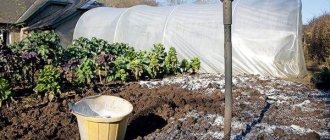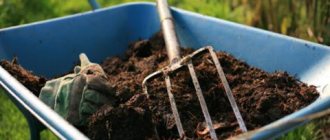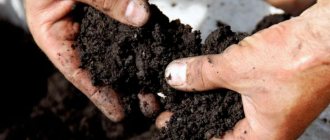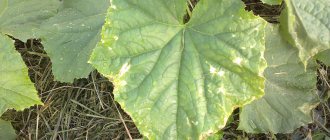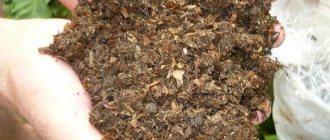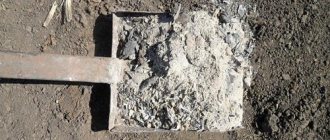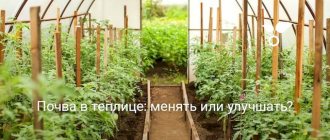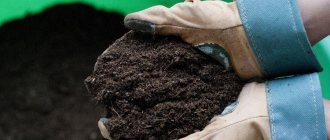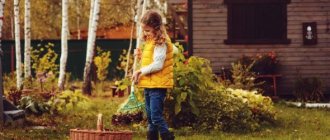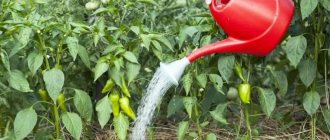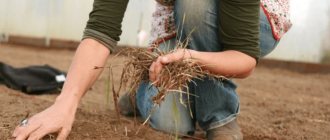Is it necessary to dig up the soil in the fall?
Since ancient times, in Russia it has been customary to dig up vegetable gardens twice - in autumn and spring . Such preparatory work improves the structure of the soil on the site and rids it of pests. Loose structured soil contains more air and water, which is favorable for better plant development. But in recent years, there have been more and more fans of organic farming, which involves refusing to dig up the soil in the fall.
Why dig up your garden twice: in autumn and spring?
Spring tillage is necessary so that the soil warms up faster after the winter cold, is easier to work with, and is soft and loose. From this, the seeds of garden plants grow faster and receive enough moisture and air.
Many gardeners claim that tilling in the fall is much more beneficial for the garden. Since deep autumn digging:
- Allows you to get rid of weeds. The roots are placed in a compost heap or dried and burned.
- Saturates the soil with air due to the large number of pores. Plant residues under the influence of oxygen and carbon dioxide decompose faster and turn into humus.
- Helps get rid of pathogenic microflora and small pests: loosened soil freezes in winter and they die.
In treated beds, weed seeds freeze in the winter, which means that significantly fewer of them will sprout in the spring. At the same time, the garden is cleared of debris, fallen leaves, large stones, and it is also easier to apply fertilizers to the loose soil.
How to plow with a walk-behind tractor correctly
The process is not difficult to understand. First, the first control pass is carried out at low speed. In this case, the device is tilted to the left. Afterwards the technique is tilted to the right and a second approach is made. The result is checked - the depth and quality of plowing. If necessary, adjustments are made.
When working, the right lug should not go beyond the furrow line; it is better to move it in the middle. When properly configured, the equipment operates smoothly, without jumps or sudden movements.
Plowing with a walk-behind tractor and plow
One of the most common tips from experienced gardeners is to stretch the cord along the furrow. This simple operation will help you navigate and make the furrow line even. How to properly plow with a walk-behind tractor with a plow: the wheel of the walk-behind tractor in the next rows follows the previous lane, which is why the line of the first one is so important. They lead it along the long side of the site.
The main work is carried out only after a test furrow and the elimination of all shortcomings. If you increase the speed a little, this will allow you to dig more evenly, without large clods.
Plowing with cutters
They are usually used for small areas; they are not included with heavy models. Adjust strictly horizontally, which will make plowing smoother. Plowing the garden with a walk-behind tractor with cutters is useful for removing weeds and loosening the soil further. The most commonly used are saber or crow's feet models. The only disadvantage is fragility and frequent repairs.
Plow the ground with a walk-behind tractor with an adapter
An adapter is a powerful trailer for an agricultural device. Its capabilities are compared to the operation of a tractor. In this case, the arable module is attached directly to the adapter. With its help, the overall plowing speed increases - up to 10 km/h, moreover, the level of productivity and safety increases. Only maneuverability is reduced. A wide range of attachments and accessories can be mounted.
This is interesting: how to plant potatoes with a walk-behind tractor.
Is autumn digging really necessary?
Is autumn digging really necessary?
Opinions on the issue of autumn digging are divided : many consider it a waste of time. However, for heavy clay or loamy soils, loosening is vital , and for cultivated soils, double cultivation, along with summer loosening, can even be harmful, as this leads to dispersion of the structure.
Some summer residents believe that during the spring-summer period the soil gets tired, sprouts weeds, and cakes . Fungi and harmful microorganisms accumulate inside the soil. Therefore, in the fall, the beds need to be loosened, dug, cleaned, and filled with organic matter . Another important argument is that autumn preparation makes it easier to work on the site in the spring .
Advantages of autumn digging
In autumn, large clods of earth should not be broken; they help retain snow and melt water . If large clods are turned over, pests and seeds move to the surface and die in frosty weather. Loose soil is saturated with air, so plant remains quickly decompose and fill the beds with nutrients .
It is important to dig up the beds in order to completely destroy weeds and apply fertilizer . Many people prefer to do this manually in order to reliably get rid of weeds and evenly add nutrition. At the same time, the burrows and passages of small rodents and pests are destroyed .
Disadvantages of autumn tillage
The upper layers of the soil are inhabited by a large number of worms and insects. They constantly move, break through passages through which plants receive water and air. When the soil layers are turned over , the structure of the soil is disrupted, the roots stop receiving air and moisture due to the destruction of the passages. The inhabitants of the upper layer of soil move to deeper layers and die .
Also:
- earthworms are destroyed, vermicompost is not formed;
- the upper, more fertile layer appears in the depths along with the seeds of weeds, which will overwinter well and quickly germinate in the spring;
- it will take a long time for the microflora and soil structure to recover.
The earth really becomes porous and soft, but after the first rain it loses these qualities. Clay soil under the influence of water becomes viscous and sticky, sandy soil cracks and becomes crusty. The beds have to be loosened again after watering or rain.
The weeds begin to grow much more intensively, as the shovel cuts the roots into several parts, which increases the number of new plants. The structure of the weed root is such that even from a small piece of the root a new plant grows.
The seeds move to the lower layers, and in the spring they return to the surface and begin to grow quickly. Weeds continue to grow throughout the season, despite constant weeding, as some of them grow from deep layers of soil.
It is better to plow the garden with a plow or a milling cutter. Plow or cutter, which is better to prepare the garden for planting?
In the villages, it has already become common practice to plow the garden with a plow, first horse-drawn, then tractor-powered. They usually plowed in mid-May, waiting for the weeds to turn green and the ground to dry out. If the ground is very wet, then plowing with a tractor results in large lumps of stuck together earth, which have to be broken up and covered with a rake.
If this is not done, then weeding and hilling the potatoes will be very labor-intensive and inconvenient. Several years ago, in the village, private tractor owners acquired milling cutters, which quickly gained popularity, since the loosened soil turned out to be smooth, soft and without lumps, one might say ready-made beds. But as practice has shown, this advanced technology also has its disadvantages.
Since I have a light T-25 tractor and made homemade plows for it with a spring-loaded comb, which breaks up clods well and, in addition, pulls out the roots of weeds. Those who plowed with a cutter found that the tractor cutter not only loosens the soil, but also crushes the roots of weeds that reproduce through the root system, such as field bindweed (birch), sow thistle, bromegrass and others. Therefore, vegetable gardens have to be weeded not twice a season, but constantly, so that the weeds do not overwhelm the crop.
It is very good to loosen small areas where the tractor will not enter with a walk-behind tractor, unlike a tractor cutter, which works at the expense of revolutions and chops the roots, a walk-behind cutter simply digs the ground, pulls out and winds the roots onto the working axis. And in general, the walk-behind tractor in the village is gaining great popularity. This is a small motor on wheels, for which you don’t need to pay taxes and register, you don’t need a driving license and you don’t need to undergo technical inspections.
Literally all rural work can be done: plowing, planting and maintaining a vegetable garden, hay cutting, short-distance transport, as well as snow removal. On top of that, it is very economical and does not take up much space. Of course, not everyone will be able to work with a walk-behind tractor right away; for this you need to understand a little about technology and mechanisms, but with time comes experience and dexterity.
As many years of practice have shown, it is better to plow a vegetable garden with a well-tuned plow, preferably twice a year, in autumn and spring, and the same walk-behind tractor will help with planting and weeding, hilling with a walk-behind tractor, and of course digging up potato tubers. Have a good harvest everyone.
When is it recommended to dig?
When is it recommended to dig?
It is necessary to dig up the garden if the area is uncultivated and has a heavy clay structure . Dense clay or loamy soil interferes with the normal breathing of plant roots, so they lack oxygen, and the carbon dioxide they release cannot break through the dense top layer .
In light, cultivated areas, you can do without digging at all, just deep loosening is enough.
Digging time
It is better to start digging after the end of the harvest , clearing the garden of tops and plant debris. To achieve the desired results, it is advisable to complete all this work before the onset of heavy autumn rains , otherwise the soil will become even denser. In the middle zone this is usually the second half of September - early October . The soil should be dry, but not dry or waterlogged.
How to dig
Small areas can be dug up by hand. However, after mechanical treatment, according to many gardeners, productivity increases and soil structure improves. This is especially important for virgin lands, uncultivated lands covered with perennial plants.
First, after completing the harvesting of root crops, you should lightly loosen the top layer of soil using a rake . This causes weed seeds to germinate. After two weeks, you can begin processing with a shovel.
Adviсe:
- It is not advisable to turn over clods of earth; it is enough to simply shift them while removing the roots of weeds;
- the shovel must be held vertically to achieve the required depth;
- The shovel is placed perpendicular to the furrow; only a small layer of soil needs to be captured.
There is no need to level the dug up area . Large lumps freeze better in the cold, and with the onset of warm weather they warm up faster. Therefore, in the spring the garden will be ready for planting much earlier.
Digging depth
The greater the depth of the arable layer, the more moisture, microorganisms, and nutrients will accumulate in the soil. However, the maximum depth should not exceed 15–25 cm , since plants and insects from the top layer of soil die when they get into the lower ones, and the inhabitants of the deep layers die when brought to the surface . In the absence of beneficial microflora, humus is not formed, and instead of beneficial organisms, pathogenic ones settle.
What fertilizers to apply to the ground in the fall
One of the stages of soil treatment, which is carried out together with digging or loosening, is fertilizing the soil, which will increase its fertility and saturate it with nutrients. This procedure is especially necessary for loamy and clayey soils, which in winter become so compressed that practically nothing grows on them.
Along with digging, you need to add fertilizer to the soil.
They need to be dug up in the autumn and one, and sometimes several, types of fertilizers applied. The procedure requires compliance with certain conditions, primarily the amount and frequency of adding nutrients.
Soil fertilizers
| Manure and droppings | They increase soil fertility, but require caution when applying - if you simply bury such fertilizers under plants, you can burn their roots | Such fertilizers need to be incorporated into the soil once every 3-4 years, 3-4 kg per square meter of garden. |
| Compost | Compost is a mass of decomposed organic waste that is “grown” in special containers. It may consist of vegetable peelings, grass clippings, tops, thin branches, etc. It takes 1-2 years for compost to mature well - after being added to the soil, it slowly decomposes and enhances the positive qualities of the soil | Compost is applied in the autumn, the optimal amount is 1-2 buckets per square meter of soil |
| Green manure | Green manure is the most environmentally friendly and cheapest type of fertilizer. These are plants that are sown in the summer, and in the fall the grown sprouts are simply embedded in the soil. They improve the water and air permeability of the soil, saturate it with nitrogen, and help fight pathogenic microorganisms and pests. The best proven legumes, cruciferous and cereal crops are clover, lupine, mustard, rapeseed, and rye. | The specifics of fertilizing the land with green manure depend on the chosen crop, but it is important not to let the plant overgrow (the height should be no more than 10 cm), otherwise it will decompose much worse |
| Peat | Peat contains a large amount of organic matter, and in addition, it retains liquid well in the soil. It is best to mix it with compost and incorporate the resulting mixture into the soil. | Peat is added to the soil at the rate of 30-40 kg per square meter |
| Ash | Ash is a universal fertilizer that contains a large amount of minerals, neutralizes acidity and repels harmful insects. As a top dressing, you can only use natural ash obtained after burning firewood or plants. | The amount of ash that needs to be added to the soil in the fall depends on the crop - on average 1-2 cups per square meter. As in the case of manure, you can fertilize the soil with ash once every 3-4 years. |
| Sawdust | Sawdust, chopped grass and tree bark are used to loosen too dense soils and retain moisture in sandy soils. They gradually decompose, resulting in the formation of compost. It is best to mix sawdust with other types of fertilizers - manure, bird droppings, urea, to create a nutritious mixture that is left to rot | The amount of sawdust that needs to be added to the soil depends on the crop being fertilized and additional components of the mixture |
| Mineral fertilizers | Mineral complexes are sold in specialized stores in ready-made form - there are many special formulations intended for different crops. They must contain a minimum of nitrogen - usually the packages are specially marked “autumn” or “for autumn use” | The conditions and amount of mineral fertilizers applied to the soil can be found in the instructions. It is strictly not recommended to exceed the dosage - it is better to underfeed the soil than to overfeed it |
| Potash fertilizers | Most potash fertilizers contain chlorine, but over the winter its negative effects are neutralized, so it is recommended to apply such substances in the fall. Along with potash fertilizers, many gardeners add phosphate mixtures to the soil. | The amount of potash fertilizers depends on their type and the crop that will grow in a certain area - from 0.1 to 0.4 kg per hundred square meters |
The general rule, which applies to almost all fertilizers, is that it is not recommended to apply them too deeply (especially for organic mixtures), otherwise they will not decompose, but will oxidize, which will significantly worsen the composition of the soil.
If carried out correctly and all conditions are met, autumn digging of the garden will significantly improve the characteristics of the soil, increase its fertility and the chances of getting a good harvest.
